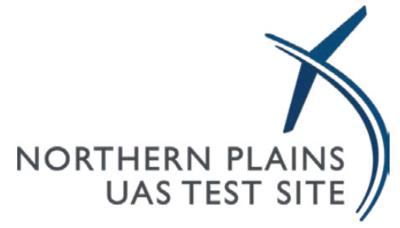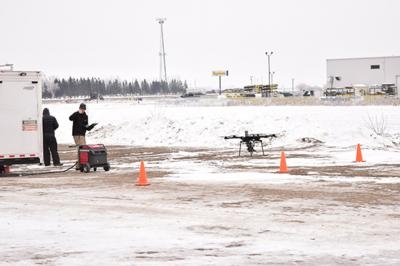Sun, Sep 20, 2020
This Infrastructure Will (First) Enable BVLOS Flights In Mckenzie And Williams Counties
The Northern Plains UAS Test Site (NPUASTS) has begun the initial stages of implementing infrastructure for North Dakota’s statewide UAS beyond visual line of sight (BVLOS) network.

The key site location chosen for this initial deployment of the BVLOS network is in the surrounding areas of Watford City and Williston, ND, due to the proximity of many potential use cases and existing state and local government infrastructure that can be leveraged for this deployment.
“We’re excited to begin the first stage of building this network in western North Dakota. It is ideally located in the heart of North Dakota’s oil and gas industry and covers a population center that will directly benefit from the network,” said Nicholas Flom, executive director of NPUASTS. “This means that even the very first stage of the network will be commercially viable.”
L3Harris Technologies and Thales USA, two leading aviation companies, have been selected to build out this baseline key site infrastructure. This infrastructure will enable BVLOS flights in McKenzie and Williams counties – with additional locations rolling out after the key site has been validated.
“The state of North Dakota’s Statewide BVLOS Network is truly the first of its kind,” said Todd Donovan, vice president of air traffic management at Thales USA. “This robust network, that safely and securely integrates UAS into the national airspace, will serve as an enviable model and be the catalyst for broader commercial UAS operations for years to come as it relies on a complete solution that addresses the FAA’s safety risk management process.”

Key site implementation is beginning immediately and will include extensive verification and validation system testing in coordination with the Federal Aviation Administration (FAA). Ensuring the safety and reliability of the network is essential as it will guide future improvements as the network is built out.
“System testing of the network is absolutely necessary for safety, and it will also allow us to perform use-case development flights to set the standard requirements for any aircraft seeking to fly on the network,” said Jim Cieplak, program manager of the statewide network. “Constantly checking for efficacy also means being prudent with the state’s investment. We are making sure the very best iteration of this technology is what we implement."
More News
Circle To Runway (Runway Number) Used by ATC to inform the pilot that he/she must circle to land because the runway in use is other than the runway aligned with the instrument appr>[...]
Aero Linx: National Aviation Safety Foundation (NASF) The National Aviation Safety Foundation is a support group whose objective is to enhance aviation safety through educational p>[...]
At Altitude Of About 250-300 Ft Agl, The Airplane Experienced A Total Loss Of Engine Power On November 6, 2024, at 1600 central standard time, a De Havilland DHC-1, N420TD, was inv>[...]
From 2009 (YouTube Edition): Three Hour Flight Was 'Flawless' -- At Least, Until Mother Nature Intervened For anyone who loves the aviation business, this was a VERY good day. Afte>[...]
Also: AMA Names Tyler Dobbs, More Falcon 9 Ops, Firefly Launch Unsuccessful, Autonomous F-16s The Air Force has begun ground testing a future uncrewed jet design in a milestone tow>[...]
 ANN's Daily Aero-Term (05.05.25): Circle To Runway (Runway Number)
ANN's Daily Aero-Term (05.05.25): Circle To Runway (Runway Number) ANN's Daily Aero-Linx (05.05.25)
ANN's Daily Aero-Linx (05.05.25) NTSB Prelim: De Havilland DHC-1
NTSB Prelim: De Havilland DHC-1 Classic Aero-TV: The Boeing Dreamliner -- Historic First Flight Coverage
Classic Aero-TV: The Boeing Dreamliner -- Historic First Flight Coverage Airborne-NextGen 05.06.25: AF Uncrewed Fighters, Drones v Planes, Joby Crew Test
Airborne-NextGen 05.06.25: AF Uncrewed Fighters, Drones v Planes, Joby Crew Test




